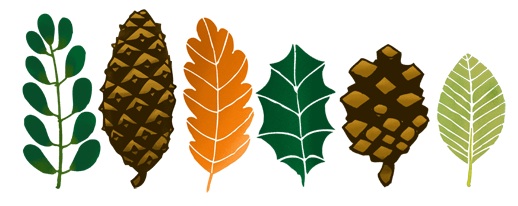A new column from Emma Warren.
I’ve always liked trees. I remember the first time someone explained the concept of a ‘happy place’ and mine was under some trees in Bluebell Woods near Orpington, on the edge of London where tarmac folds into field, with sunlight pin-pricking through the leaves. Later, my happy place was replaced by the dancefloor of the Hacienda but that’s another story.
I can talk a good talk about trees: that the woods are the places where we can change, a place to confront monsters and a place to test out different identities, or that the word book comes from the same Saxon root as the beech (boc) because the bark was use as an early writing tablet. But there’s a big fat gap. I can’t identify any trees.
That’s not strictly true. I know a Plane, obviously, because who could miss those grey and green dinosaur platelets on the bark? And I know a cherry tree, although if I’m honest, I’m not entirely sure if those older trees with eaten-all-the-pies tubby trunks are cherries or something even more exotic. And I know a Silver Birch because we had one in the back garden when I was a kid.
In order to remedy the situation I’ve started looking properly at trees. I don’t have the vocabulary yet, but like the beginnings of all new languages, I’ve started to see the differences: that spindly one with multiple trunks that line the train tracks into London is different from the one with the mossy, venous, dark brown bark down my street. My local tree discoveries are hindered by the fact that all the trees on my road were violently pollarded last autumn. All that remains are apocalyptic knubby knuckles held defiant to the sky, which leaves my new Woodland Trust leaf and bud identification swatch somewhat redundant.
Last weekend I went out to my new classroom, Oxleas Woods. I go there whenever I can, even if it’s just for a Special Brew-strength cup of tea at old school seventies-style caff, a place run by the power of the urn. I like to look out over the dip and the ancient woodland that surrounds it. Oxleas is a bit scrabby at times, and there are always a panoply of barky dogs, but it’s local and I like it.
We went down, armed with the aforementioned identification swatch and the knowledge I hoped I’d absorbed from Julian Hight’s ‘Britain’s Tree Story’ which shows the history and mythology of Britain’s native trees with beautiful archive photography and etchings of gospel oaks or ancient elms, as well as more recent snaps of the ancient trees that have survived.
Unfortunately it was freezing and muddy and I had desert boots on and it was way too cold to stand around looking at bare trees trying to work out what kind of leaves they might have if we ever get to spring so we retreated after a short circuit, most of which was spent jumping around the edges of mud ponds and blowing onto iced fingers.
This column will be a record of my learning of trees, and who knows what else?
